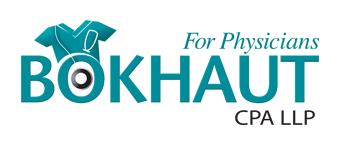As the holiday season approaches, doctors often give gifts to colleagues, administrative staff, nurses, and...
11 Reasons Why Physicians Contribute to RESPs
You May Also Like…
As veterans of higher education, physicians often anticipate that their children will carry the torch of post-secondary learning. Physicians can optimize savings and tax on this future expenditure by contributing to a Registered Education Savings Plan (RESP), which has a multitude of advantages. An RESP is a government-assisted savings vehicle designed to help Canadians save for their children’s post-secondary education.
1. Tax-Deferred Growth: While contributions to an RESP are made with after-tax money, the growth of your investments within the plan is tax-deferred. This means you won’t be taxed on the earnings if they remain within the RESP. When the funds are withdrawn for educational purposes, accumulated investment income is taxed in the child’s hands (typically at a low tax rate), rather than the doctor’s hands (typically high rate), resulting in tax savings.
2. Government Grants: The Canadian government incentivizes RESP contributions through the Canada Education Savings Grant (CESG) program, where they will match a portion of the annual contributions. The grant that is provided is scaled based on family income. As a result, physicians are generally eligible for a maximum grant of $500/year (20% of the annual contributions, up to $2,500). The grant, therefore, provides a guaranteed return on investment of 20% up to $2,500/year.
3. Income Smoothing: For incorporated physicians, drawing annual funds from their corporation to be invested in an RESP can assist with income smoothing and tax reduction. If the doctor is not in the highest personal tax bracket, drawing out funds on an annual basis, rather than large lump sums as the funds are required, can allow the funds to be extracted at lower tax brackets.
4. Mitigating Education Costs: The costs of higher education are continually rising. By contributing to an RESP, doctors build a financial cushion that can help alleviate the burden of tuition fees, textbooks, housing, and other educational expenses for their children.
5. Flexibility in Beneficiaries: If the intended beneficiary doesn’t pursue post-secondary education, the RESP plans offer flexibility, allowing the contributor to transfer the funds to another eligible family member without forfeiting government grants or investment gains
6. Investment Opportunities: Within the RESP, doctors can invest the contributed funds in various investment options like mutual funds, stocks, bonds, and GICs. This opens the door to potential growth through compounding over time, which can significantly enhance your child’s education savings.
7. Fostering Financial Discipline: Consistently contributing to an RESP instills valuable financial discipline and nurtures long-term saving habits. It provides a structured approach to set aside funds dedicated to future education.
8. Family and Friends Contributions: An RESP is not solely funded by parents or guardians. Family members and friends can also contribute, making it a wonderful way for others to contribute to a child’s education fund during special occasions, further boosting the education savings.
9. Avoiding Student Loan Debt: By saving for education ahead of time, physicians help their children avoid or minimize the burden of student loans. This can empower them with a solid financial foundation as they embark on their post-secondary education journey and subsequent careers.
10. Peace of Mind: The knowledge that there’s a dedicated fund for education purposes can provide both the doctor and their children with peace of mind. This assurance minimizes stress and uncertainty when the time comes to cover higher education expenses.
11. Lifetime Contribution Limit: While there is a lifetime contribution limit for each beneficiary, there is no annual ceiling on RESP contributions. This provides the flexibility to catch up on contributions if you haven’t been able to contribute as much in previous years.
Contributing to an RESP is a strategic financial decision that offers a plethora of benefits to physicians, from tax advantages and government grants to investment opportunities and peace of mind. It is essential to familiarize yourself with the rules and regulations governing RESPs and tailor your contributions to your unique circumstances and aspirations.
* This article was prepared on September 7, 2023. Content is for informational purposes only and is not intended to be used as professional advice. Each taxpayer’s circumstances are unique. Bokhaut CPA makes no representation as to the accuracy and completeness of the information in this article and will not be liable for any errors or omissions in this information.
You May Also Like…
Tax Implications of Gift Gifting From Your Medical Practice
As the holiday season approaches, doctors often give gifts to colleagues, administrative staff, nurses, and professional advisors. While these gestures are generous, they may lead to unexpected tax implications. Gifts to Non-Employees: Doctors may give gifts to...
Physician New to Canada? What you need to know about Canadian Personal Taxes.
Are you a physician that moved to Canada in the last year? If so, these are some things that you should know about filing your first Canadian Personal Tax Return: When are Canadian taxes due? Canadian personal taxes are calculated based on income earned between...
Basic Overview of Canadian Personal Taxes
Personal tax season is upon us and as you gather your personal tax documents you may be wondering “How are my personal taxes calculated?”. How are Canadian Personal Taxes Calculated? Canadian taxes are based on a graduated rate system. This system can be thought of in...
I Just Called to Scam You
How to determine if it’s CRA on the line. Over the past few years, scam phone calls from individuals claiming to be from the Canada Revenue Agency (CRA) have increased. As we approach the time of year to file personal tax returns, these calls become more frequent as...
RRSP or TFSA
RRSPs and TFSAs are both “registered” investment accounts, which means that they receive special tax treatment that is not applicable to other “non-registered” investment accounts. The special tax treatment of these accounts increases the total benefit of investing by...
Month of Giving (Part 3): Donation of Securities
Instead of liquidating securities to fund donations, it may be more tax efficient to donate securities directly to charitable organizations. If you sell a security to obtain cash to donate, you generally need to pay tax on the profit earned, also known as a capital...
Month of Giving (Part 2): Tax Efficient Donating
Many physicians in Canada have incorporated their practices, as there are significant tax benefits to doing so. This then provides incorporated doctors with two avenues to donation: Corporate Donations Personal Donations We are often asked, “should I make donations...
Month of Giving (Part 1): Donation Tax Credit Refresher
December is the month of giving. While deciding which charitable organizations you wish to support this year, the following donation tax credit information is good to keep in mind: What qualifies as a donation for tax purposes? To qualify for the donation tax...
The Season of Giving – is it taxable?
As the holiday season approaches, it is not unusual for doctors to provide gifts to their employees, hospital administrative staff, colleagues, and nurses. While these gifts are generous gestures, they may result in unexpected tax implications. Gifts to Employees When...
Financial Considerations of Buying a Home
There is a lot to think about when you buy your first home. What colour should you paint the living room? What should the extra bedroom be used for? A home office? A gym? Or maybe a nursery? Outside of aspirational objectives, there are many practical matters...









